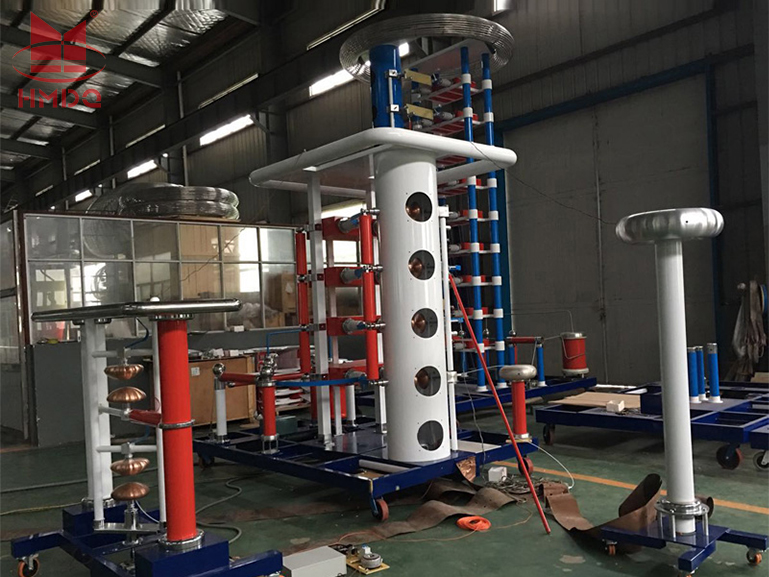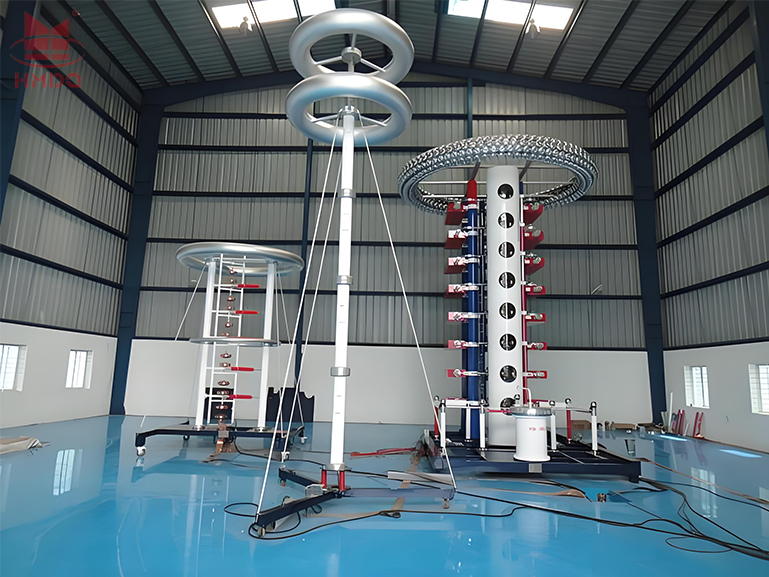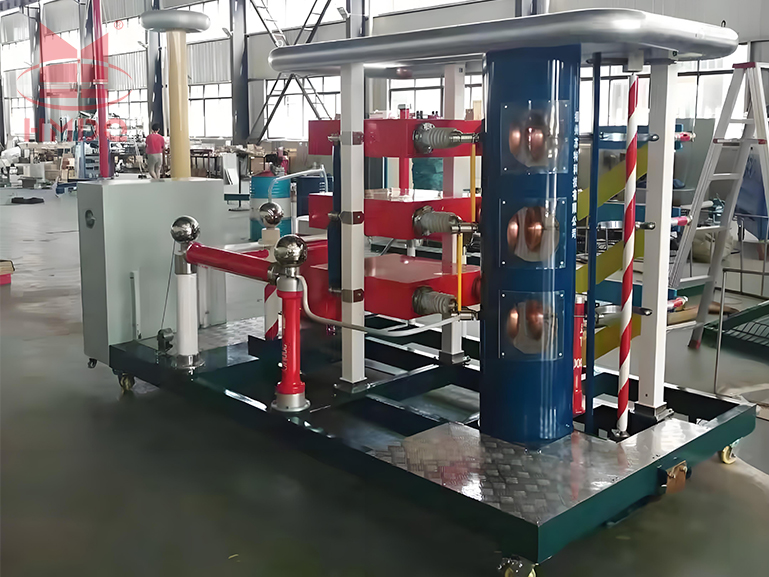How does an impulse voltage generator generate various waveforms

An impulse voltage generator is a device used to generate various waveforms,including impulse,step,and oscillatory waveforms.The ability to generate these different waveforms is achieved through the design and configuration of the generator's circuit components.Here's a general overview of how an impulse voltage generator can generate various waveforms:
1.Impulse waveform:
The impulse waveform is generated by rapidly discharging a charged capacitor through a lowimpedance path.
The circuit typically consists of a highvoltage power supply,a charging resistor,a capacitor,and a spark gap or a switch.
When the switch or spark gap is closed,the capacitor discharges rapidly,creating a shortduration,highamplitude voltage pulse.
The shape of the impulse waveform is determined by the circuit parameters,such as the capacitance,resistance,and inductance.
2.Step waveform:
The step waveform is generated by applying a sudden change in voltage to a circuit.
The circuit may include a power supply,a switch,and a load.
When the switch is closed,the voltage across the load changes abruptly,creating a step waveform.
The rise time and amplitude of the step waveform are determined by the circuit parameters and the load characteristics.
3.Oscillatory waveform:
The oscillatory waveform is generated by creating a resonant circuit that oscillates at a specific frequency.
The circuit typically includes a capacitor,an inductor,and a switch or a spark gap.
When the switch or spark gap is closed,the capacitor discharges through the inductor,creating an oscillatory waveform.
The frequency of the oscillations is determined by the values of the capacitance and inductance in the circuit.
The ability to generate various waveforms is achieved by designing the impulse voltage generator circuit with different components and configurations.By adjusting parameters such as the capacitance,inductance,resistance,and the triggering mechanism,the generator can be tuned to produce the desired waveform characteristics,such as rise time,amplitude,and frequency.
These waveforms are widely used in various applications,including electrical testing,power system analysis,electromagnetic compatibility(EMC)testing,and highvoltage research and development.
1.Impulse waveform:
The impulse waveform is generated by rapidly discharging a charged capacitor through a lowimpedance path.
The circuit typically consists of a highvoltage power supply,a charging resistor,a capacitor,and a spark gap or a switch.
When the switch or spark gap is closed,the capacitor discharges rapidly,creating a shortduration,highamplitude voltage pulse.
The shape of the impulse waveform is determined by the circuit parameters,such as the capacitance,resistance,and inductance.
2.Step waveform:
The step waveform is generated by applying a sudden change in voltage to a circuit.
The circuit may include a power supply,a switch,and a load.
When the switch is closed,the voltage across the load changes abruptly,creating a step waveform.
The rise time and amplitude of the step waveform are determined by the circuit parameters and the load characteristics.
3.Oscillatory waveform:
The oscillatory waveform is generated by creating a resonant circuit that oscillates at a specific frequency.
The circuit typically includes a capacitor,an inductor,and a switch or a spark gap.
When the switch or spark gap is closed,the capacitor discharges through the inductor,creating an oscillatory waveform.
The frequency of the oscillations is determined by the values of the capacitance and inductance in the circuit.
The ability to generate various waveforms is achieved by designing the impulse voltage generator circuit with different components and configurations.By adjusting parameters such as the capacitance,inductance,resistance,and the triggering mechanism,the generator can be tuned to produce the desired waveform characteristics,such as rise time,amplitude,and frequency.
These waveforms are widely used in various applications,including electrical testing,power system analysis,electromagnetic compatibility(EMC)testing,and highvoltage research and development.



